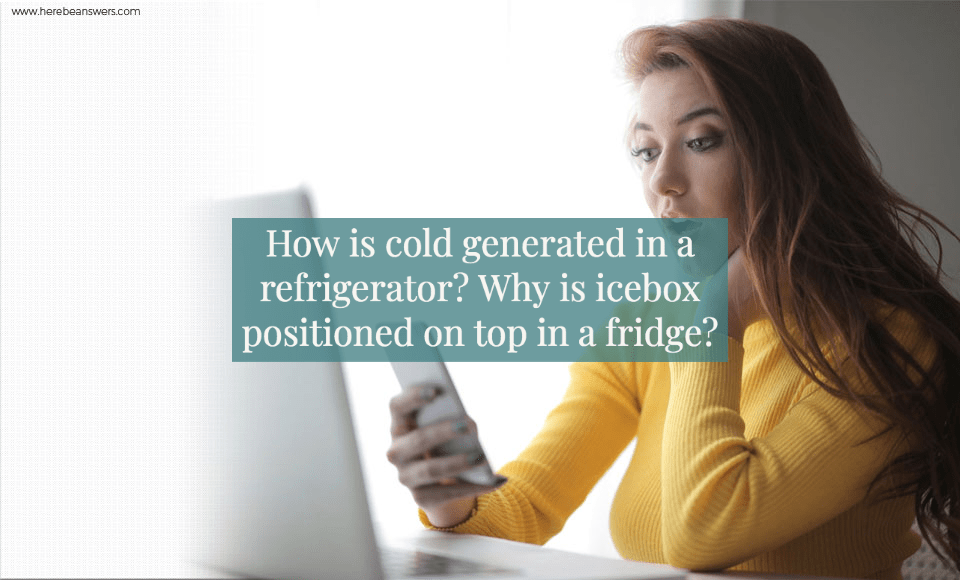It’s a law of science that if you smear a little amount of water on skin, after a while it will evaporate and you will feel coldness on the skin. The reason why it happens is that to turn water into vapor, energy is used. Evaporating water gets this energy (heat) from the body itself. Hence, the part losing heat as energy goes cold. The same principle is applied in a refrigerator. Here, the liquid called chlorofluorocarbon (CFC) evaporates in a thin tube; that is, turns into gas. While doing so CFC absorbs the heat in the refrigerator, and thus the interior is bound get cold. The CFC gas then moves towards the tangle of tubes in the rear part of the refrigerator, where it is turned again into liquid using compressor and loses its heat to the air. This liquid again absorbs the heat in the refrigerator to turn into gas.
Now remains the position of the icebox. The answer of the question related to icebox too is very interesting. It is better to keep an ice-compartment, i.e. icebox on top, because in a refrigerator more heat is accumulated in top, hence the first squirt of cold liquid should be made there. This is why it is arranged for CFC turned into liquid with compressor to flow towards the top directly. When it is inevitable to do so and also the liquid entering the top level is super cold, then why not use it to benefit? Turning water into ice necessitates removing all natural heat off it – and it is quite natural that this can be done only using the freshly entered freezing-cold liquid CFC.
A refrigerator is made of several components, such as an expansion valve, chiller cabinet, compressor, and radiator pipes. The process of cooling begins with the expansion valve as the coolant in a state of pressurized liquid enters it. As it is making its way through, the temperature suddenly drops, which makes it cool, expand, and partly turns it into gas.
The chiller cabinet is next, around which, the coolant flows and boils, turning it entirely into gas. At the same time, the heat is removed and absorbed from the food stored inside. Then, the coolant is squeezed or compressed by the compressor, which raises both its pressure and temperature. By now, the coolant is a high-pressured hot gas. The thin radiator pipes located on the rear of the fridge helps flow the coolant through while dissipating its heat and turning back into a liquid by cooling.
The coolant repeats the cycle by flowing back through the expansion valve. This repetitive cycle absorbs the heat from the inside of the refrigerator while releasing it from the outside.
As for the icebox that is placed on top in a fridge, there is simple physics following it. While the icebox/freezer is placed at the top, the cold air produced by it is denser than the warm air located at the bottom. Since the cold air is comparatively denser, it will sink while the warm air rises and gets cold in the freezer. The same principle applies to air conditioners as well. Nowadays, you will come across refrigerators that have a side to side cooling sections i.e. one section will consist of a fridge whereas the other will entirely be the freezing section.
Apart from the law of physics, the position of the icebox has to do with convenience as well. When food is stored in an icebox, it becomes heavier due to freezing. Therefore, it will put more strain on your back while lifting heavy food items if the icebox is placed at the bottom. This is why people usually prefer buying refrigerators with an icebox positioned at the top.
